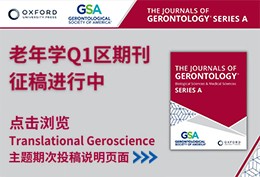当前位置:
X-MOL 学术
›
ISPRS J. Photogramm. Remote Sens.
›
论文详情
Our official English website, www.x-mol.net, welcomes your
feedback! (Note: you will need to create a separate account there.)
PolSAR2PolSAR: A semi-supervised despeckling algorithm for polarimetric SAR images
ISPRS Journal of Photogrammetry and Remote Sensing ( IF 10.6 ) Pub Date : 2025-01-31 , DOI: 10.1016/j.isprsjprs.2025.01.008
Cristiano Ulondu Mendes , Emanuele Dalsasso , Yi Zhang , Loïc Denis , Florence Tupin
ISPRS Journal of Photogrammetry and Remote Sensing ( IF 10.6 ) Pub Date : 2025-01-31 , DOI: 10.1016/j.isprsjprs.2025.01.008
Cristiano Ulondu Mendes , Emanuele Dalsasso , Yi Zhang , Loïc Denis , Florence Tupin
Polarimetric Synthetic Aperture Radar (PolSAR) imagery is a valuable tool for Earth observation. This imaging technique finds wide application in various fields, including agriculture, forestry, geology, and disaster monitoring. However, due to the inherent presence of speckle noise, filtering is often necessary to improve the interpretability and reliability of PolSAR data. The effectiveness of a speckle filter is measured by its ability to attenuate fluctuations without introducing artifacts or degrading spatial and polarimetric information. Recent advancements in this domain leverage the power of deep learning. These approaches adopt a supervised learning strategy, which requires a large amount of speckle-free images that are costly to produce. In contrast, this paper presents PolSAR2PolSAR, a semi-supervised learning strategy that only requires, from the sensor under consideration, pairs of noisy images of the same location and acquired in the same configuration (same incidence angle and mode as during the revisit of the satellite on its orbit). Our approach applies to a wide range of sensors. Experiments on RADARSAT-2 and RADARSAT Constellation Mission (RCM) data demonstrate the capacity of the proposed method to effectively reduce speckle noise and retrieve fine details. The code of the trained models is made freely available at https://gitlab.telecom-paris.fr/ring/polsar2polsar The repository additionally contains a model fine-tuned on SLC PolSAR images from NASA’s UAVSAR sensor.
中文翻译:

PolSAR2PolSAR: 一种用于极化 SAR 图像的半监督去斑算法
极化合成孔径雷达 (PolSAR) 影像是地球观测的宝贵工具。这种成像技术广泛应用于各个领域,包括农业、林业、地质和灾害监测。然而,由于固有的散斑噪声,为了提高 PolSAR 数据的可解释性和可靠性,通常需要进行滤波。散斑滤光片的有效性是通过它在不引入伪影或降低空间和极化信息的情况下衰减波动的能力来衡量的。该领域的最新进展利用了深度学习的力量。这些方法采用监督学习策略,这需要大量无斑点的图像,这些图像的生成成本很高。相比之下,本文提出了 PolSAR2PolSAR,这是一种半监督学习策略,只需要从所考虑的传感器获得相同位置的一对噪声图像,并以相同的配置获取(与卫星在其轨道上重访期间的入射角和模式相同)。我们的方法适用于各种传感器。在 RADARSAT-2 和 RADARSAT 星座任务 (RCM) 数据上的实验证明了所提出的方法能够有效减少散斑噪声和检索精细细节。训练模型的代码可在 https://gitlab.telecom-paris.fr/ring/polsar2polsar 免费获得该存储库还包含一个模型,该模型根据来自 NASA UAVSAR 传感器的 SLC PolSAR 图像进行微调。
更新日期:2025-01-31
中文翻译:

PolSAR2PolSAR: 一种用于极化 SAR 图像的半监督去斑算法
极化合成孔径雷达 (PolSAR) 影像是地球观测的宝贵工具。这种成像技术广泛应用于各个领域,包括农业、林业、地质和灾害监测。然而,由于固有的散斑噪声,为了提高 PolSAR 数据的可解释性和可靠性,通常需要进行滤波。散斑滤光片的有效性是通过它在不引入伪影或降低空间和极化信息的情况下衰减波动的能力来衡量的。该领域的最新进展利用了深度学习的力量。这些方法采用监督学习策略,这需要大量无斑点的图像,这些图像的生成成本很高。相比之下,本文提出了 PolSAR2PolSAR,这是一种半监督学习策略,只需要从所考虑的传感器获得相同位置的一对噪声图像,并以相同的配置获取(与卫星在其轨道上重访期间的入射角和模式相同)。我们的方法适用于各种传感器。在 RADARSAT-2 和 RADARSAT 星座任务 (RCM) 数据上的实验证明了所提出的方法能够有效减少散斑噪声和检索精细细节。训练模型的代码可在 https://gitlab.telecom-paris.fr/ring/polsar2polsar 免费获得该存储库还包含一个模型,该模型根据来自 NASA UAVSAR 传感器的 SLC PolSAR 图像进行微调。

































 京公网安备 11010802027423号
京公网安备 11010802027423号